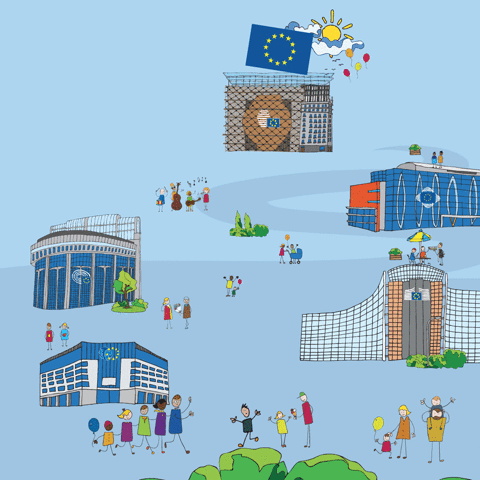The European Union (EU) is a unique political and economic community with supranational and intergovernmental dimensions. It is composed of twenty-seven member states primarily located in Europe. In 1957, six European countries formed the European Economic Community (EEC) by the Treaty of Rome. Since then the EU has grown in size through the accession of new member states and has increased its powers by the addition of new policy areas to its remit. In 1993, the Maastricht Treaty established the base of the current legal framework.
La Unión Europea (UE) es una comunidad política y económica única con dimensiones supranacionales e intergubernamentales. Está compuesto por veintisiete estados miembros ubicados principalmente en Europa. En 1957, seis países europeos formaron la Comunidad Económica Europea (CEE) por el Tratado de Roma. Desde entonces, la UE ha crecido en tamaño a través de la adhesión de nuevos estados miembros y ha aumentado sus poderes mediante la adición de nuevas áreas políticas a sus competencias. En 1993, el Tratado de Maastricht estableció la base del actual marco legal.
The EU created a single market which seeks to guarantee the freedom of movement of people, goods, services and capital between member states. It maintains a common trade policy, agricultural and fisheries policies, and a regional development policy. In 1999 the EU introduced a common currency, the euro, which has been adopted by thirteen member states. It has also developed a role in foreign policy, and in justice and home affairs. Passport control and customs checks between many member states were abolished under the Schengen Agreement.
La UE creó un mercado único que busca garantizar la libertad de movimiento de personas, bienes, servicios y capitales entre los estados miembros. Mantiene una política comercial común, políticas agrícolas y pesqueras, y una política de desarrollo regional. En 1999, la UE introdujo una moneda común, el euro, que ha sido adoptada por trece estados miembros. También ha desarrollado un papel en la política exterior, y en la justicia y los asuntos internos. El control de pasaportes y los controles aduaneros entre muchos estados miembros fueron abolidos en virtud del Acuerdo de Schengen.
With over 492 million citizens the EU generates an estimated nominal GDP of €8.6 ($10.7) trillion in 2007. It represents its members in the WTO and observes the G8 summits. Twenty EU countries are members of NATO. Important institutions of the EU include the European Commission, the European Parliament, the Council of the European Union, the European Council, the European Court of Justice and the European Central Bank. EU citizens elect the Parliament every five years.
With over 492 million citizens the EU generates an estimated nominal GDP of €8.6 ($10.7) trillion in 2007. It represents its members in the WTO and observes the G8 summits. Twenty EU countries are members of NATO. Important institutions of the EU include the European Commission, the European Parliament, the Council of the European Union, the European Council, the European Court of Justice and the European Central Bank. EU citizens elect the Parliament every five years.
Con más de 492 millones de ciudadanos, la UE genera un PIB nominal estimado de € 8,6 ($ 10.7) billones en 2007. Representa a sus miembros en la OMC y observa las cumbres del G8. Veinte países de la UE son miembros de la OTAN. Entre las instituciones importantes de la UE se incluyen la Comisión Europea, el Parlamento Europeo, el Consejo de la Unión Europea, el Consejo Europeo, el Tribunal de Justicia Europeo y el Banco Central Europeo. Los ciudadanos de la UE eligen al Parlamento cada cinco años.
This article is licensed under the GNU Free Documentation License. It uses material from the Wikipedia article "European Union". You can explore more on the Wikipedia website. The text and the images are used here only for educational purposes.







No hay comentarios:
Publicar un comentario